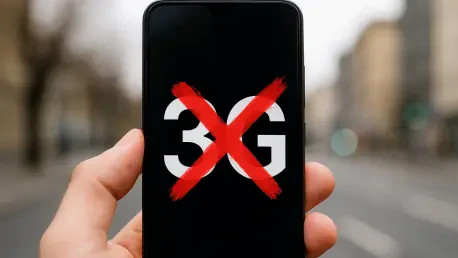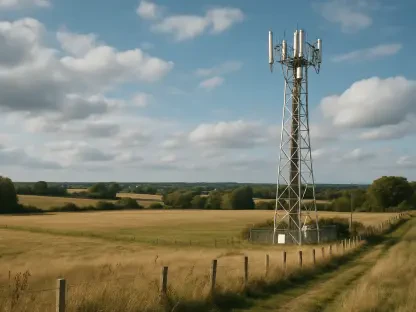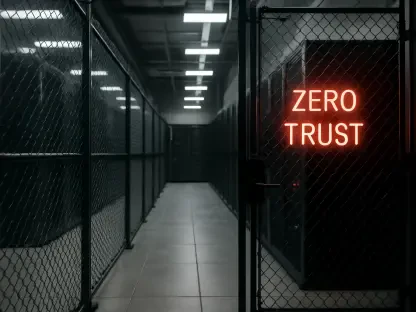As the telecommunications landscape in Canada undergoes a significant transformation with the phasing out of older network technologies, a major shift is causing ripples across the industry, particularly for smaller carriers and their subscribers. Rogers, one of the country’s leading network providers, has completed its 3G network shutdown, a move aimed at paving the way for more advanced systems like 4G and 5G. However, this transition is not without challenges, as it directly impacts mobile virtual network operators (MVNOs) that rely on Rogers’ infrastructure to deliver services. These smaller carriers, along with their customers, are now grappling with the fallout, especially those using outdated devices incompatible with modern standards. This development highlights a broader tension within the industry, where the push for technological progress often leaves vulnerable users and smaller businesses struggling to adapt to rapid changes in network capabilities.
Impact on Smaller Carriers and Their Customers
The shutdown of Rogers’ 3G network has placed significant pressure on MVNOs such as SpeakOut Wireless, Good2Go Wireless, and Red Wireless, which depend on Rogers’ infrastructure to serve their customer base. For these smaller carriers, the transition means a sudden need to ensure that their subscribers are equipped with devices that support Voice over LTE (VoLTE), the standard required for calls and data on newer networks. Many customers, particularly those with older phones or devices purchased outside Canada, find themselves at risk of losing service entirely. This situation is compounded by the fact that MVNOs often cater to niche markets, including budget-conscious individuals or retirees who may not have the means or technical know-how to upgrade their equipment quickly. The disruption extends beyond mere inconvenience, threatening to cut off essential communication for those who rely on these affordable plans, exposing a gap between technological advancement and user readiness.
Moreover, the relationship between Rogers and some MVNOs has added another layer of complexity to this transition. A notable example is the ongoing tension with Ztar Wireless, the parent company of SpeakOut and Good2Go, which has expressed dissatisfaction with Rogers’ handling of the shutdown. Reports suggest that Ztar is exploring options to migrate its customer base to Bell’s network, a move that introduces further uncertainty for subscribers already navigating the challenges of device compatibility. This business friction underscores a critical issue: the 3G shutdown is not merely a technical hurdle but also a strategic challenge for MVNOs striving to maintain service continuity. For customers of carriers like Red Wireless, which targets older Canadians, the impact is particularly acute, as this demographic may struggle with both the cost and complexity of adapting to new technology, highlighting the need for targeted support during such industry-wide shifts.
Challenges of Device Compatibility and User Adaptation
One of the most pressing issues stemming from the 3G shutdown is the widespread incompatibility of older devices with modern network standards like VoLTE. Many users, especially those who have held onto phones for several years or purchased them from international markets, are discovering that their devices can no longer support basic functions like making calls or accessing mobile data. This problem is not limited to Rogers’ direct subscribers but extends to the vast customer base of MVNOs operating on its network. The reality is that without a compatible device, users face the stark choice of either upgrading their hardware or losing access to essential services. This creates a significant barrier, particularly for low-income individuals or those unfamiliar with the intricacies of mobile technology, who may find the cost of a new phone prohibitive or the process of switching devices daunting.
Beyond the technical challenges, the human element of this transition cannot be overlooked. The shutdown disproportionately affects vulnerable populations, including seniors and those in rural areas where access to tech support or retail options for new devices may be limited. For instance, subscribers of Red Wireless, a carrier focused on retired Canadians, are among those most at risk of being left behind. The need to upgrade is often paired with a lack of clear guidance, leaving many users confused about their next steps. While some may turn to family or community resources for help, others risk falling through the cracks, losing not only service but also pre-paid balances that cannot be transferred to other carriers. This situation calls for a more robust outreach effort from both Rogers and affected MVNOs to ensure that no user is left without a viable solution in the wake of such a sweeping technological change.
Navigating Solutions and Future Considerations
For those affected by the 3G shutdown, actionable solutions are critical to maintaining connectivity in this new landscape. Upgrading to a device that supports VoLTE is the most straightforward path, with experts recommending phones sold by Canadian retailers within the last four to five years to guarantee compatibility. However, for users unable to afford a new device, exploring alternative low-cost carriers such as Freedom or Public Mobile presents another option, though these providers are also navigating their own network transitions. Freedom is currently addressing similar challenges, while Public Mobile, under Telus, is expected to phase out 3G by the end of this year. For those determined to stay within Rogers’ ecosystem, Chatr offers an affordable alternative, provided users have the necessary hardware. These options, while practical, require careful consideration of long-term costs and service reliability to avoid further disruptions.
Looking back, the completion of Rogers’ 3G shutdown marked a pivotal moment in Canadian telecommunications, reflecting the inevitable march toward modernization. Yet, it also exposed the fragility of an ecosystem where smaller carriers and their customers bore the brunt of the transition. The disputes between Rogers and MVNOs like Ztar Wireless served as a reminder of the business challenges intertwined with technical upgrades, while the struggles of users with incompatible devices underscored the human cost of progress. As the industry moves forward, the lessons learned from this period should inform strategies to better support subscribers during future network evolutions. Carriers and regulators alike must prioritize clear communication, accessible upgrade programs, and tailored assistance for vulnerable groups to ensure that advancements in technology do not come at the expense of connectivity for all.









